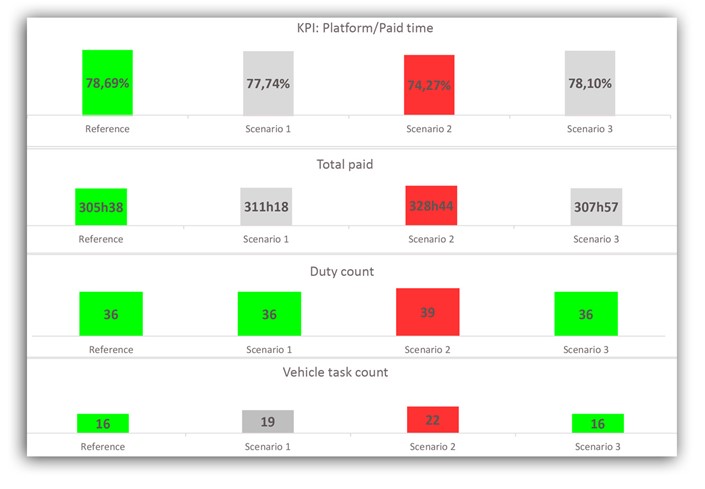La pandemia del COVID-19 ha traído consigo varios desafíos.
Una reducción significativa de la cantidad de pasajeros, una disponibilidad limitada de personal y las medidas de contención necesarias podrían todas requerir que los operadores adapten sus planes y procesos operacionales sin tiempo por adelantado. Por supuesto, cada contexto es diferente, pero pensamos que sería útil compartir con ustedes algunos planes de contingencia que hemos visto, con algunos breves tutoriales (solo en inglés).
Reduced service
The most obvious measure we are observing is an important reduction in service levels to account for reduced ridership, decreased driver availability, or to discourage unnecessary travel.
The simplest way of achieving this service reduction is to do what many operators do for public holidays, which is apply the Saturday or Sunday service. This video shows how this can be done easily in the schedules calendar.
Once we have applied the Sunday schedule throughout the week, we must review the weekly roster accordingly. A first approach could be to maintain the same number of required employees and move to a 4-day work week instead of a normal 5-day work week, as seen in this example.
Another approach could be to reduce the number of required employees while maintaining a 5-day work week.
Other methods can also be used to reduce the service level, such as recreating the timetable or adapting the existing timetable. Either of these methods will require a review of the blocking and run-cutting scenarios.
Containment measures
The safety and security of your personnel being your top priority, here are some examples of measures focused on protecting your drivers.
A first measure we have seen is to ensure that a minimum time, 10 minutes for example, is provided during driver’s changeover to sanitize the seat, steering wheel and near working environment.
A more vigorous approach could be to avoid vehicle changes and move to a one-driver-one-bus approach, where a driver works on a single bus during their shift.
Another very interesting measure that has been implemented by one of our clients in Singapore is to limit interactions between drivers from different depots by dedicating every relief point to a single depot. This way drivers who report to different locations do not meet each other and cross-depot contamination is avoided.

These are all examples of standalone measures, but every operator will probably mix and match various measures. HASTUS can be used to evaluate multiple scenarios and decide which scenario is most suitable to be implemented. In the current circumstances, security and feasibility will probably be greater priorities than cost efficiency, but that does not take away from the need to try multiple scenarios.
We hope that these examples will help feed your ideas on how your scheduling tool can help implement your contingency measures in the current circumstances.

